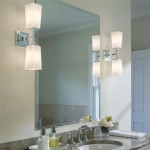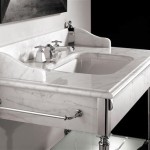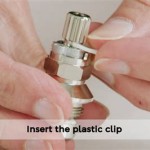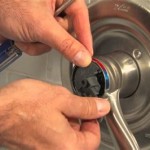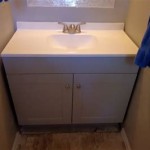How to Best Unclog a Bathroom Sink
A clogged bathroom sink is a common household problem that can be frustrating and inconvenient. Fortunately, most clogs can be resolved with a few simple steps. This article outlines the best methods for unclogging a bathroom sink, providing a comprehensive guide to address the issue effectively.
1. Removing Obvious Obstructions
Before attempting any advanced methods, it is crucial to check for and remove any visible obstructions in the sink drain. This could include hair, soap scum, toothpaste, or other debris. Using a small tool like a pair of tweezers or a bent wire hanger can be helpful in retrieving these items. A flashlight may also be useful to illuminate the drain and spot any potential clogs.
2. Utilizing a Plunger
A plunger is an essential tool for dislodging clogs in bathroom sinks. Ensure that the plunger has a rubber cup that fits snugly over the drain opening. Before plunging, fill the sink basin with a few inches of water to create a seal for the plunger to operate effectively. Place the plunger over the drain, ensuring a complete seal, and pump up and down vigorously. This creates pressure that can break up the clog and dislodge it from the drain.
3. Employing a Drain Snake
For more stubborn clogs that cannot be removed with a plunger, a drain snake is a valuable tool. These flexible, spring-like devices can be inserted down the drain and twisted to break up clogs. Choose a drain snake that is long enough to reach the point of the clog. Insert the snake carefully into the drain, twisting it gently as you push it deeper. Once the snake encounters the clog, continue twisting and pulling it back, removing the blockage. Avoid forcing the snake too aggressively, as this could damage the drain pipes.
4. Utilizing Baking Soda and Vinegar
A combination of baking soda and vinegar is a natural and effective solution for some clogs. Pour a cup of baking soda down the drain, followed by a cup of vinegar. The mixture will fizz and react, potentially breaking down the clog. Allow the mixture to sit for 30 minutes, then flush the drain with boiling water. This method is best suited for minor clogs caused by organic matter like hair and soap scum.
5. Trying Commercial Drain Cleaners
Commercial drain cleaners often contain harsh chemicals that can effectively dissolve clogs. However, it is important to use these products with caution as they can be corrosive and potentially damage the drain pipes. Always follow the manufacturer's instructions carefully and wear appropriate protective gear, such as gloves and eye protection. It is advisable to avoid using commercial drain cleaners frequently, as they can degrade the pipes over time.
6. Recognizing When to Call a Plumber
If the above methods fail to resolve the clog or if the sink continues to drain slowly after unclogging, it is essential to call a professional plumber. A plumber can inspect the drain system for underlying problems, such as a collapsed pipe or a blockage that requires specialized tools. They can also recommend solutions for preventing future clogs.
Regular maintenance is key to preventing bathroom sink clogs. It is recommended to routinely clean the drain with a drain cleaner or baking soda and vinegar mixture. Additionally, consider using a drain strainer to catch hair and other debris before it enters the drain. These simple steps can significantly reduce the frequency of clogs and maintain the functionality of your bathroom sink.

How To Unclog A Bathroom Sink Hana S Happy Home

5 Natural Ways To Unclog A Bathroom Sink Hiller How

How To Unclog A Sink The Right Way
How To Unclog A Sink 4 Easy Ways

How To Unclog A Bathroom Sink The Home Depot

How To Clear A Clogged Drain Reviews By Wirecutter

How To Unclog A Sink 12 Easy Ways

How To Unclog A Bathroom Sink Hana S Happy Home

How To Unclog Your Bathroom Sink 5 Diy Solutions
How To Unclog A Sink 4 Easy Ways
Related Posts
